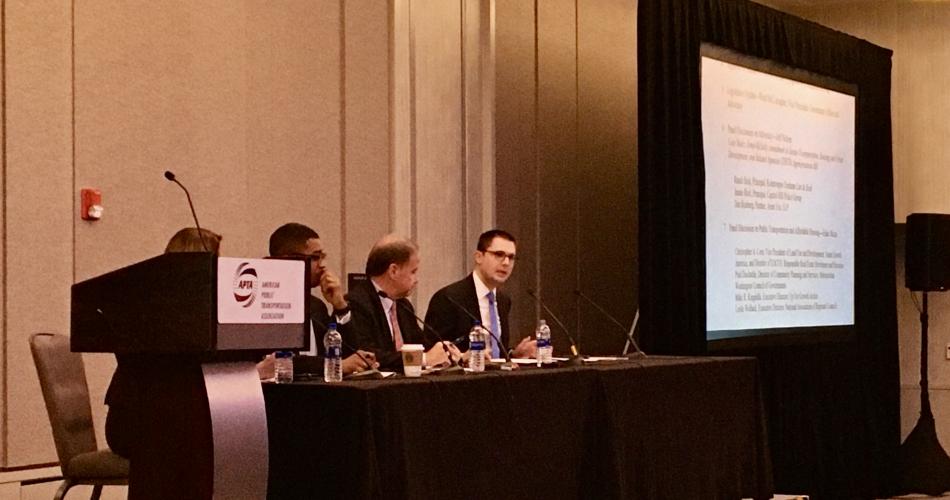Reading time: 5 minutes
Up for Growth Action was founded in 2018 on the premise that we aren’t building enough housing. Our research indicates that the United States fell 7.3 million homes short from meeting housing needs from 2000 – 2015. The report also identified transit-oriented development is one of the most straightforward and effective ways to address our affordability crisis.
The housing challenge is complex and national in scope, and that requires federal leadership. Our work at the federal level has focused on legislation that would enable more housing, particularly near transit.
I think we can all agree on the idea that housing – both affordable and market rate – should be more available near transit. The reason the federal government invests in transit is to serve as well as shape urban growth. We simply aren’t achieving this vision.
The most successful transit projects are those that leverage the built environment. They achieve better ridership and farebox recovery. They generate higher property taxes per acre, creating more local funding sources for infrastructure maintenance and expansion. They catalyze vibrant, livable and walkable communities – connecting people to economic opportunity. And they result in fewer cars on the roads with residents of those communities riding transit more.
There has been pushback from agencies that housing policy should not be addressed through transit policy because land use decisions are not under the jurisdiction of transit agencies, and the Federal Transit Administration (FTA) recognizes this concern. However, since 2013, the FTA has maintained that major transit projects must still consider and speak to zoning and land use in New Starts applications. FTA encourages transit agencies to coordinate and form partnerships with localities to create alignment between transit and land use planning.
We believe the existing approach isn’t working. Over the past 10 years, 84% of transit station areas funded by New Starts are less dense than the most-dense areas in their region. Up for Growth Action believes one of the primary reasons we are seeing expected density near transit is because the current way in which the FTA evaluates applications does not accurately measure and reward projects that will create the most housing.
One way to advance this improvement is through reforming the application process. A bill we’re working on, the Build More Housing Near Transit Act sponsored by Congressman Scott Peters (D-CA-52), does this in an effective and streamlined manner.
The legislation would ensure that housing feasibility is evaluated in a quantitative manner using real estate proformas – an approach already used by some transit agencies. Currently, evaluation guidance only requires qualitative assessments of what current and future housing and economic development will look like along transit lines. Applicants have the option to include more robust quantitative evaluations but are not required to submit such an analysis.
If you want more housing – of all kinds – near transit, you must ensure that housing is indeed feasible. Fortunately, we already have the tools to accurately assess such feasibility. Housing practitioners already use these tools to make determinations for the best future investment, and transit agencies could benefit from incorporating these evaluations as well. We also see this shift in application requirements as a tool for transit agencies to coordinate and form partnerships with those that control zoning and land use.
While we are confident that the Build More Housing Near Transit Act is an effective way to expand transit-oriented development, we view this legislation as a starting point in a comprehensive strategy to better align housing and transit. We hope to work with APTA, its members, and Congressional champions to ensure the legislation is workable and achieves our shared goals of building more housing near transit and creating the vibrant communities we all desire.
